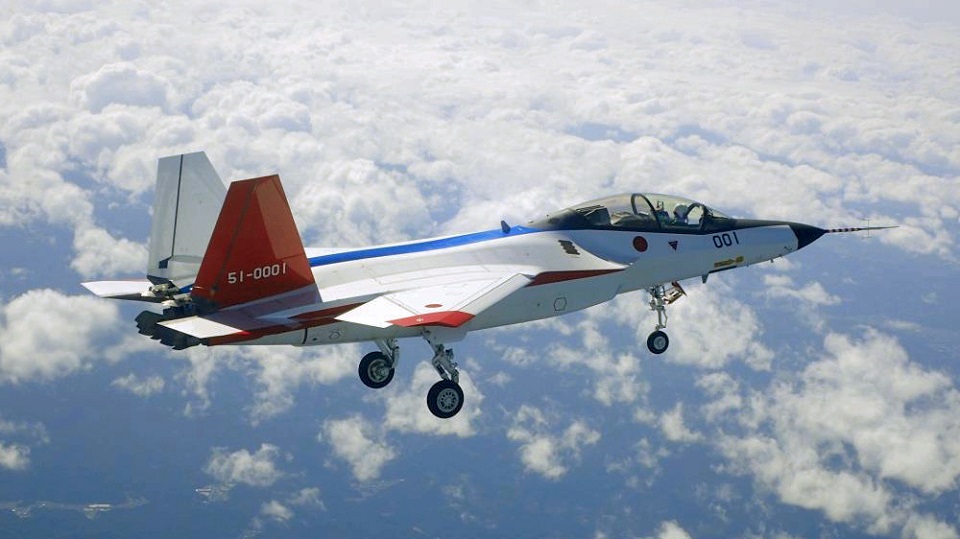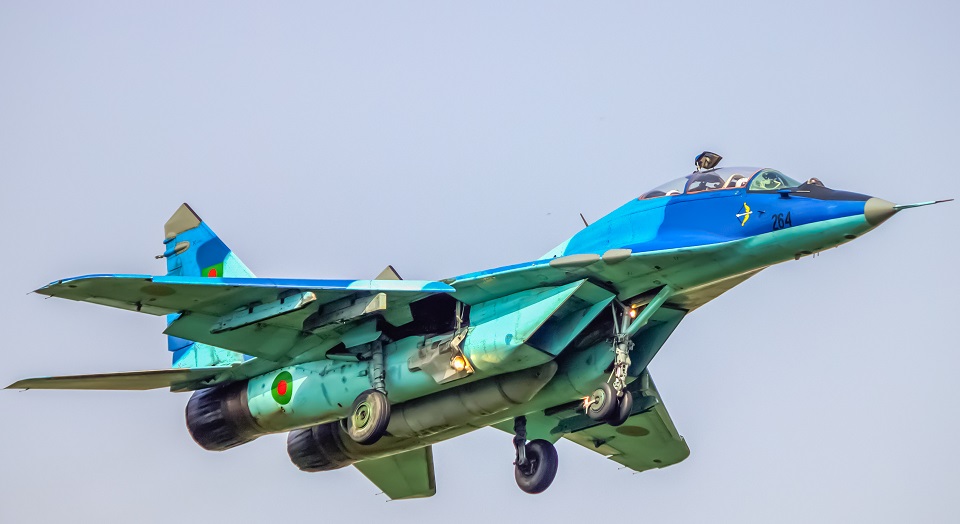Defence
Japan Greenlights Fighter Jet Sales to other nations

In a significant departure from its postwar pacifist stance, Japan’s Cabinet has given the green light to a plan aimed at selling future next-generation fighter jets developed in collaboration with Britain and Italy to other countries.
This decision marks a notable shift in Japan’s defense strategy, emphasizing its willingness to engage in international arms sales and bolster its role in global security. By allowing international sales of these advanced aircraft, Japan aims to enhance its technological edge in the face of escalating regional tensions, particularly from neighboring China and Russia.
Accompanying this decision is a revision to Japan’s arms equipment and technology transfer guidelines, permitting the sale of co-produced lethal weapons to countries beyond the project’s partners. However, Tokyo emphasizes that, for the time being, exports of such weaponry will be restricted solely to the new fighter jets, slated for deployment by 2035.
Japan’s move towards arms exports, which was formerly restricted by its pacifist constitution, is a reflection of the increased urgency with which it must address threats to regional and international security, especially those posed by China. The proposed fighter jet is expected to give Japan the cutting-edge capabilities it needs to manage the rising tensions in the area and put it in a competitive position in relation to adversaries like China and Russia.
The collaborative effort with Italy and Britain aims to develop an advanced fighter aircraft, slated to replace Japan’s aging fleet of F-2 fighters and the Eurofighter Typhoons utilized by its allies. However, this strategic move isn’t devoid of historical context. Japan’s wartime past as an aggressor, coupled with the devastation of World War II, has long shaped its constitutional limitations on military activities and arms exports.
The Japanese government has pledged to restrict the export of deadly weapons produced in collaboration with other parties, limiting sales to recently built fighter jets, in an effort to calm fears arising from its military past. Moreover, promises have been given that these weapons will not be deployed in active conflict zones.

Aviation
Middle East Shifts Focus to Chinese 5th gen Fighter J-20 Fighter Amid US F-35 Disapproval

Following the U.S. refusal to grant the United Arab Emirates access to the F-35 Lightning II, a cutting-edge fifth-generation fighter, the UAE appears to be exploring alternative options, potentially turning to China to fulfill its security requirements. The aircraft that has captured the UAE’s interest is China’s own fifth-generation stealth fighter, the J-20.
A significant factor behind the U.S. denial stems from Israel’s longstanding security strategy, which revolves around maintaining military superiority in the region. Israel has historically sought advanced military technology from the U.S. while discouraging its neighbors from acquiring similar capabilities. This strategy aims to uphold Israel’s dominant position in regional military affairs, with support from U.S. and European military equipment.
The influence of the U.S. in the Palestine-Israel conflict significantly impacts defense exports in the region, leading many Asian and Middle Eastern countries to seek military equipment from alternative sources like Russia and China.
Recent engagements between the UAE and China indicate a growing partnership, potentially extending to military cooperation. With the UAE’s interest in Chinese aircraft like the J-20, following the setback with the F-35, there’s speculation that the UAE may increasingly turn to China for its defense needs. This shift is evident with the UAE’s acquisition of the Chinese Falcon L-15 advanced trainer aircraft.
The UAE, home to around 1,000 U.S. companies, also serves as a strategic regional base for numerous enterprises operating across the Middle East, North Africa, and parts of Asia. However, recent developments suggest a diversification of partnerships, with the UAE playing a pivotal role in facilitating business ties with the USA.
Comparing the American F-35 Lightning II with the Chinese Chengdu J-20 showcases two formidable fifth-generation fighter aircraft. The F-35, developed in the U.S., is a versatile single-engine aircraft designed for various combat roles, excelling in both air-to-air and air-to-ground missions. In contrast, the J-20, China’s response to fifth-generation fighters, boasts its own stealth capabilities.
The J-20 surpasses the F-35 in terms of range, with its ability to undertake strategic air missions without frequent refueling. Powered by the domestically produced WS-15 after-burning turbofan engine, the J-20 achieves impressive speeds nearing Mach 2, along with a commendable range of approximately 700 miles.
Notably, the J-20’s ability to launch missiles from a distance and its extensive weapons payload exceed those of the F-35, while maintaining lower operating costs. However, the F-35 retains an advantage in avionics and sensor technology, as well as its vertical takeoff and landing capability, enabling diverse mission execution.
Viewed as a rival to other fifth-generation fighters like the American F-22 Raptor and F-35 Lightning II, as well as the Russian Su-57, the J-20 continues to undergo upgrades in avionics, sensors, and weaponry to ensure its competitiveness in modern aerial warfare. Equipped with advanced stealth technology, the J-20 enhances its ability to operate effectively in contested airspace.
Defence
South Korea Unveils Single-Seat FA-50 Fighter to Challenge Tejas &JF-17

The South Korean government has unveiled plans to invest a staggering 49.4 billion won (approximately $35.7 million) to upgrade its FA-50 fighter jets, with a keen eye on meeting global demand and expanding its export portfolio.
The upcoming single-seat variant of the FA-50 is on the brink of entering a fiercely competitive arena, where it will face off against India’s LCA Tejas and Pakistan’s JF-17 Thunder. Positioned within a distinct niche, these aircraft cater to countries seeking the capabilities of a full-sized fighter jet without the burdensome acquisition and operational costs typically associated with top-tier models.
This significant budget allocation is earmarked for the development of a single-seat variant of the FA-50, a jet trainer manufactured by Korea Aerospace Industries (KAI). The objective is clear: to tap into new markets, including the highly coveted United States market, according to statements from the Ministry of Trade, Industry, and Energy.
The investment, spread over the course of the project running through 2028, will see the government inject 29 billion won. KAI and its partner firms will contribute the remaining amount required to enhance the performance capabilities of the FA-50s. Key enhancements include equipping the upgraded FA-50 with a domestically developed automatic ground collision avoidance system, along with extending its operational range by up to 30 percent.
South Korea has already made significant strides in exporting the FA-50, having shipped around 140 units of the double-seat version to six countries, including Poland and Malaysia. With this latest investment, the country aims to further solidify its position in the global defense market.
Industrial Policy Director General Lee Seung-ryeol highlighted the FA-50’s unmatched competitiveness in terms of price, performance, delivery time, and operational costs. The development of the single-seat variant is expected to bolster exports, particularly as demand for light trainer combat fighter jets continues to soar internationally.
KAI is gearing up to seize this opportunity, eyeing a substantial share of the estimated 450-unit future market for aircraft in this category. The company aims to secure approximately 50% of this market share, further underscoring its ambitious expansion plans.
Lee emphasized the commitment to establishing a robust defense ecosystem and expanding research and development efforts to facilitate the export of FA-50s to the U.S. market by 2025.
Defence
Why does the US buy Soviet-era combat aircraft from Russia?

In a strategic maneuver reflecting geopolitical complexities, the United States has acquired a substantial cache of Soviet-era combat planes from Kazakhstan, a key ally of Russia.
Reports indicate that the acquisition encompasses 81 obsolete aircraft, including MiG-31 interceptors, MiG-27 bombers, MiG-29 fighters, and Su-24 bombers, with a sale value declared at $2.26 million, Which implies that each aircraft was $19,300.
Kazakhstan, in its transition towards modernizing its military arsenal, has been phasing out outdated Soviet-era aircraft in favor of more advanced models like the Russian Su-30SM multi-role aircraft.
The decision to offload these aircraft, valued at one billion tenge (£1.8 million), underlines Kazakhstan’s pragmatic approach towards military modernization. The sale notice emphasized the unusable state of the aircraft, rendering their modernization economically unfeasible, and limiting their utility as sources of spare parts.
While the rationale behind the US purchase remains undisclosed, speculation suggests potential implications for Ukraine’s Armed Forces (AFU), given that the acquired aircraft types are already in service there.
There are indications that these aircraft might eventually find their way to Kyiv, where they could serve various purposes such as disassembly for spare parts or deployment as decoys at airfields. This move underscores the evolving dynamics in the region, particularly amidst heightened tensions following Russia’s invasion of Ukraine.
Historically, Kazakhstan has maintained close ties with Russia, stemming from their shared Soviet legacy. However, recent geopolitical shifts, exacerbated by Russia’s aggressive actions in Ukraine, have prompted Kazakhstan to recalibrate its alliances, drawing closer to Western nations.






















